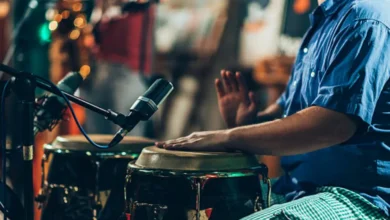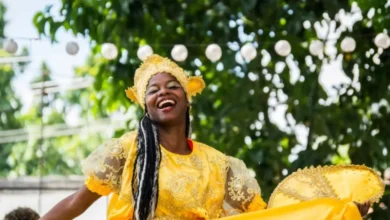Australia, a land of breathtaking landscapes and vibrant cities, boasts a culture as diverse as its geography. From the ancient wisdom of its Indigenous peoples to the modern thrill of global surfing trends, the tapestry of Australian culture is rich and complex. This article will journey through the key aspects that define Australia, providing a friendly and informative look at this captivating nation.
A Deep Dive into Indigenous Australian Culture
The story of Australia begins with its Indigenous Australians, the oldest living continuous culture on Earth. Their connection to the land, or “Country,” is fundamental to their identity and spirituality. For tens of thousands of years, they have developed intricate social structures, artistic expressions, and profound knowledge systems.
The Significance of the Dreamtime
Central to Indigenous culture is the Dreamtime (also known as the Dreaming or Tjukurrpa). This concept encompasses the time of creation, when ancestral beings formed the landscape, established laws, and imbued the land with meaning. These stories are passed down through generations via oral traditions, art, and ceremonies.
Dreamtime stories aren’t mere myths; they are the basis for Indigenous law, social structures, and cultural practices. They explain the origins of the world and humanity, define kinship systems, and guide behavior within the community.
See also British Culture and Its Influence on Global Literature and Entertainment
British Culture and Its Influence on Global Literature and EntertainmentArt: A Visual Language
Indigenous art is a powerful form of communication, conveying stories, history, and cultural beliefs. Rock art, dating back thousands of years, is a testament to the ancient artistic traditions. Modern Indigenous art, including dot paintings, bark paintings, and carvings, continues to evolve, incorporating both traditional and contemporary elements.
These artworks are not simply decorative; they are deeply symbolic, with each color, shape, and line carrying specific meaning. They often depict the land, its animals, and the stories of the Dreamtime, acting as a visual language that connects the present to the past.
The Importance of Song and Dance
Song and dance play a vital role in Indigenous culture. Ceremonies, often linked to specific places and times of the year, involve intricate performances that tell stories, celebrate life events, and maintain cultural continuity. Traditional instruments like the didgeridoo and clapsticks provide the rhythmic backbone to these expressions.
Through these performances, Indigenous Australians keep their cultural heritage alive, reinforcing community bonds and passing on knowledge to future generations. They are vibrant displays of cultural resilience and continuity.
See also Different Cultures Around the World
Different Cultures Around the WorldModern Challenges and Resilience
Despite facing immense challenges, including colonization and its devastating effects, Indigenous Australians have demonstrated incredible resilience. They are actively involved in preserving their culture, reclaiming their rights, and advocating for a more just and equitable future.
Today, there is growing awareness and recognition of the unique value of Indigenous culture. Efforts are underway to incorporate Indigenous knowledge into education systems and to ensure the voices and perspectives of Indigenous Australians are heard and respected.
The Impact of European Settlement on Australian Culture
The arrival of European settlers in the late 18th century marked a dramatic shift in the cultural landscape of Australia. While European traditions and institutions became dominant, they also interacted and blended with existing Indigenous cultures, creating a unique Australian identity.
The Development of a Unique Australian Identity
The early colonial experience, shaped by isolation and the challenges of adapting to a new environment, fostered a sense of egalitarianism and resourcefulness among the settlers. This spirit, often referred to as “mateship,” became a cornerstone of the Australian identity.
Mateship emphasizes loyalty, friendship, and mutual support, reflecting the collaborative nature of early Australian society. This value continues to be cherished as an important part of modern Australian culture.
Cultural Influences and Diversification
Beyond the initial European influence, Australia’s population has become increasingly diverse, with waves of immigration from all corners of the world. This immigration has significantly enriched Australian culture, contributing to its vibrant multiculturalism.
Immigration has impacted the Australian food scene, with an exciting fusion of culinary traditions, and has enriched music, art and literature. Australia now embraces a rich multicultural landscape and continues to evolve.
The Evolving Concept of Australian Nationalism
Australian nationalism has evolved over time, moving away from its colonial roots. The nation has sought to define itself independently, celebrating its achievements, embracing its diverse population, and addressing past injustices, including reconciliation with Indigenous Australians.
Today, Australian nationalism is characterized by a sense of pride in the country’s unique culture, natural beauty, and its contributions to global society. This is often seen through national celebrations, sporting events and public discourse.
Exploring Contemporary Australian Culture
Modern Australia is a dynamic and innovative society, characterized by its laid-back lifestyle, passion for sports, and embrace of technology. This section explores some key aspects of contemporary Australian life.
A Love for Sports: From Cricket to Surfing
Sports are an integral part of Australian culture. Cricket, Australian Rules Football (AFL), and rugby are followed with immense passion. The national obsession with sports fosters a strong sense of community and national pride.
Beyond these popular sports, Australia’s coastline makes surfing a hugely significant part of the culture. Australia is renowned for its surfing beaches, with many Australians regularly enjoying this activity as part of their leisure time and the development of some of the world’s best surfers.
The Thriving Arts and Entertainment Scene
Australia has a vibrant arts and entertainment scene, with world-class theater, film, music, and literature. From the iconic Sydney Opera House to the internationally recognised Australian films and literature, Australia makes a significant global contribution.
Australian artists, writers, and performers often explore themes of identity, belonging, and the Australian experience, creating unique and thought-provoking works that contribute to the nation’s cultural landscape.
The Australian Food Scene: A Culinary Melting Pot
The Australian food scene has evolved from basic colonial fare to a diverse culinary melting pot. The influence of Asian and European immigrants is evident, leading to a vast array of exciting flavors and dishes.
From the traditional Aussie barbeque to a diverse array of cuisine from around the world, Australia has become a mecca for fine dining and informal food stalls, reflecting its multicultural population and love of good food.
The Australian “Larrikin” Spirit and Language
A distinct element of the Australian character is the “larrikin” spirit: a rebellious, irreverent, and humorous attitude. This attitude is reflected in the Australian sense of humor and often in their relaxed approach to authority.
Australian English, with its unique slang, colloquialisms, and pronunciation, is a vital part of the country’s identity. The language reflects the history, the environment and the unique character of the nation.
The Global Impact of Australian Culture
Australian culture has had a significant global impact, particularly in areas such as surfing, film, and music. The unique blend of tradition and innovation has resonated around the world.
The Global Phenomenon of Australian Surfing
Surfing culture, born on Australia’s beaches, has spread globally, becoming an iconic image of the Australian lifestyle. Australian surfers have dominated the sport, and Australian surf brands have become synonymous with the sport’s global growth.
Australian surf culture is not just about the sport itself; it’s about a lifestyle, a community, and a deep connection with the ocean, influencing fashion, music, and art around the world.
Australian Film and Literature on the World Stage
Australian film and literature have gained international acclaim for their unique storytelling and portrayal of the Australian experience. Australian filmmakers have tackled diverse themes, including the harshness of the outback, the beauty of the natural environment, and the challenges of multiculturalism.
Australian authors have similarly offered perspectives that resonate with an international audience, exploring the complexities of Australian identity and contributing to the global literary landscape.
Australian Music: A Global Voice
From indie rock to electronic music, Australian music has made an indelible mark on the world stage. Australian musicians have achieved global fame, pushing boundaries and shaping music trends across a wide range of genres.
Australian music celebrates the country’s cultural diversity, environmental consciousness, and independent spirit, reflecting the dynamic and innovative nature of Australian society.
Conclusion: A Continually Evolving Cultural Tapestry
Australian culture is a captivating blend of ancient traditions and modern influences, a vibrant and dynamic tapestry that continues to evolve. From the deep spiritual connection of its Indigenous peoples to the global reach of its surf culture, Australia has a unique story to tell.
This culture is one of resilience, innovation, and a strong sense of community. It is a culture that embraces its multicultural population, celebrates its unique identity, and engages with the global community. Exploring Australian culture is an exploration of a nation that has its own unique place in the world’s story.
We hope that you have enjoyed exploring the many elements that make up this dynamic country. Thank you for taking the time to read this piece.“`




